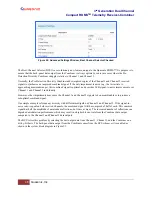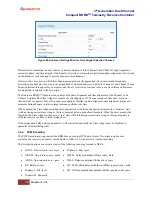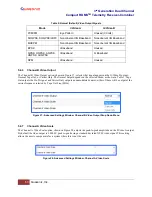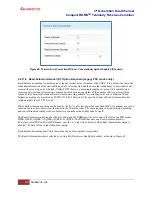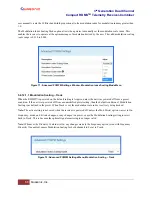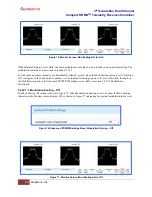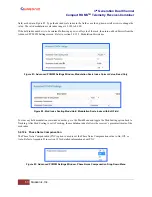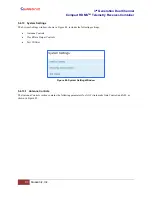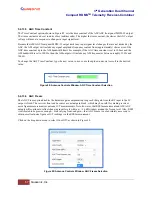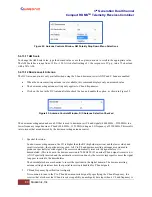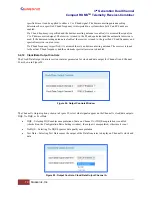
3
rd
Generation Dual Channel
Compact RDMS
TM
Telemetry Receiver-Combiner
56
Quasonix, Inc.
Figure 68: Forward Error Correction Window, Convolutional Symbol Enabled (Checked)
5.4.11.4 Reed-Solomon Decoder (K7 Option Required) (Legacy PSK modes only)
Reed-Solomon encoding is another form of legacy forward error correction. Like LDPC, it is a block code that adds
redundant information at the transmitting end of a telemetry link and then uses that redundancy to detect and correct
errors at the receiving end of the link. Unlike LDPC, however, encoding/decoding occurs on 8-bit symbols, and
errors are detected and corrected on a symbol-by-symbol basis, regardless of the number of bits in error within a
symbol. This characteristic makes Reed-Solomon encoding suitable for correcting burst errors. Details of Reed-
Solomon encoding are presented in CCSDS 131.0-B-2 Section 4. The specific variant of Reed-Solomon decoder
implemented is the (255, 223) code.
While Reed-Solomon encoding can be used by itself, it is a far less powerful code than LDPC. Its primary use is as a
second code to correct burst errors that arise in the Viterbi decoder. The concatenation of Reed-Solomon encoding
and convolutional encoding results in far better performance than either code by itself.
The Reed-Solomon control requires the K7 option, and the RDMS must be set to one of the following PSK modes:
BPSK, QPSK, AQPSK, AUQPSK, OQPSK, or UQPSK. The RDMS has only one Reed-Solomon decoder.
Therefore, in AQPSK and AUQPSK modes, only the ‘A’ data will be decoded when Reed-Solomon decoding is
enabled; ‘B’ data will be output without decoding.
Reed-Solomon decoding and Viterbi decoding can be used together or separately.
The Reed-Solomon decoder is selected by setting R-S Decoder to Enabled (checked), as shown in Figure 69.





